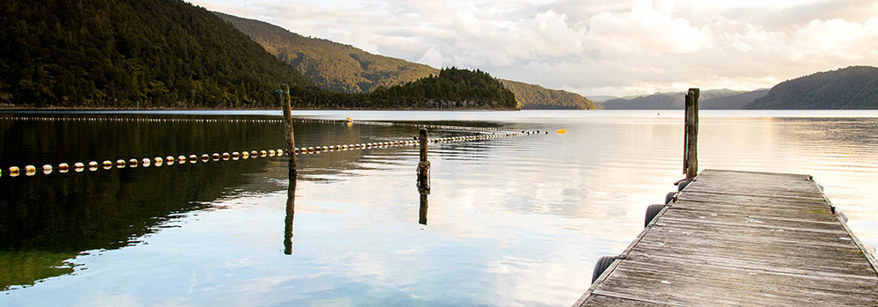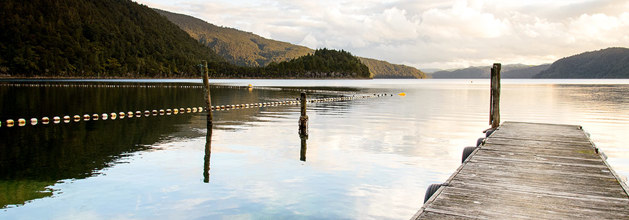Bay of Plenty Regional Council was granted resource consent to build the diversion wall structure in Lake Rotoiti. The diversion wall is designed to stop water flowing from Lake Rotorua into the main body of Lake Rotoiti, instead diverting it down the Kaituna River via the Ōhau Channel.
Most of Lake Rotoiti's problems are caused by nutrients flowing into it from Lake Rotorua, so the diversion wall will, over time, significantly improve the lake's water quality. Scientists say it will have little impact on Kaituna River quality.
The Ōhau Diversion Wall information sheet has information about the wall.
The wall
The diversion wall starts just south of the entrance to the Ōhau Channel which links Lake Rotorua and Lake Rotoiti. It runs 75 metres offshore parallel to State Highway 33 and extends to Te Akau Point (1,275 metres). The diversion wall is driven into Rotoiti's lake bed and rises to just above lake level. It is made of large, precast interlinking concrete and steel wall segments designed to last for at least 50 years. There is a cap on top of the wall to discourage people from walking on it, for safety reasons.
The diversion wall cost approximately $10 million to build, funded by Bay of Plenty Regional Council and Central Government.
The final design of the structure was based on feedback from the public at various hui and public meetings, as well as comments received on questionnaires, and a number of technical studies. These studies include:
- Water quality modelling.
- Sediment transport modelling.
- Hydrodynamic modelling of the lake.
- Geotechnical investigations.
- Assessment of effects on downstream water quality in the Kaituna River and Maketū Estuary.
- Landscape and visual assessment.
- Cultural assessment.
- Ecological assessment, including effects on fish and water birds.
What the wall achieves
The wall diverts water currently flowing through the channel from Lake Rotorua into Lake Rotoiti, directly down the Kaituna River. Previously, about 40 percent of this water flows into the Kaituna River, mostly in summer. The rest of the year it flowed mostly into Lake Rotoiti.
The diversion wall prevents 180 tonnes of nitrogen and 15 tonnes of phosphorus entering the main body of Lake Rotoiti from Lake Rotorua each year through the Ōhau Channel.






